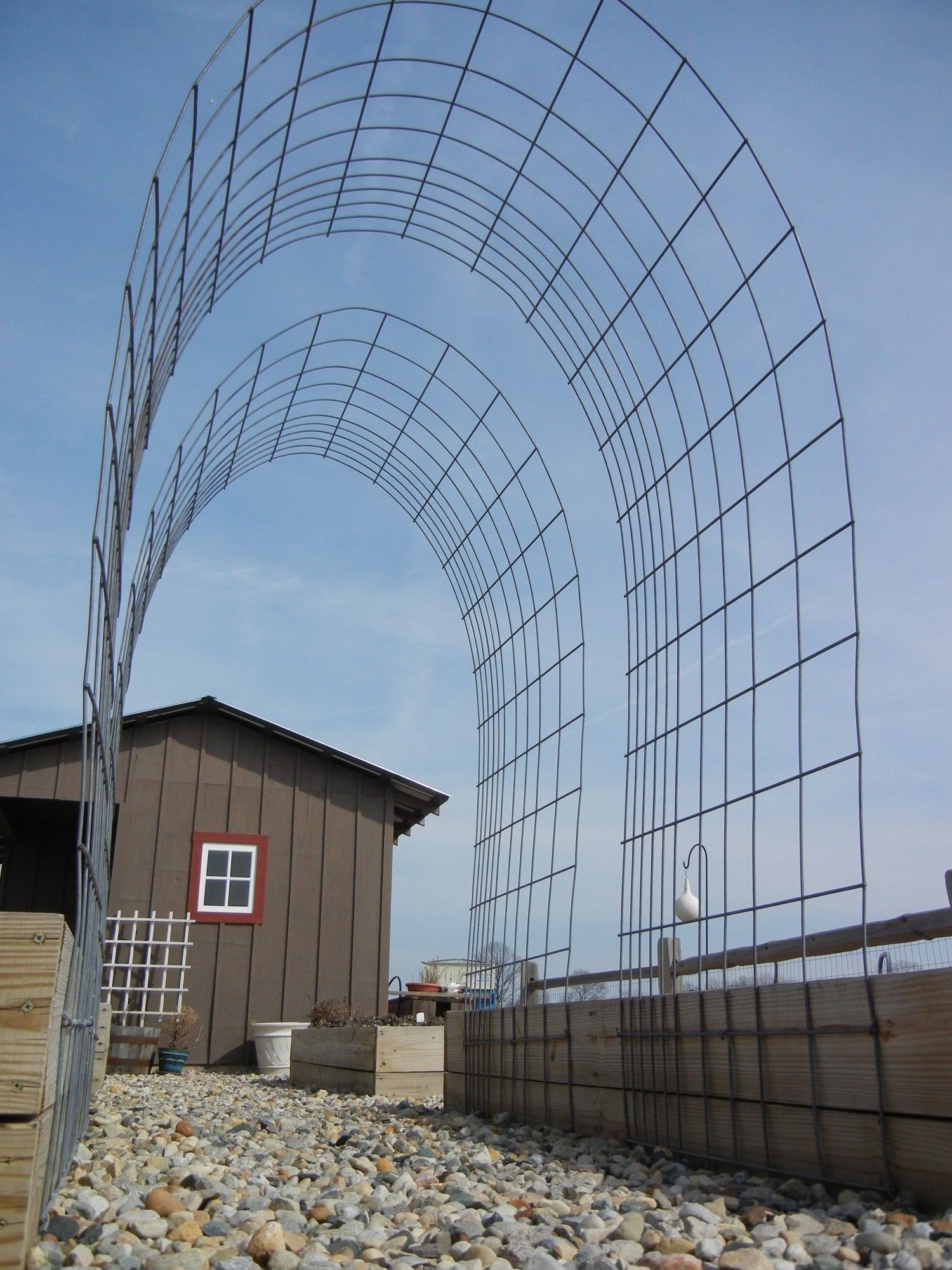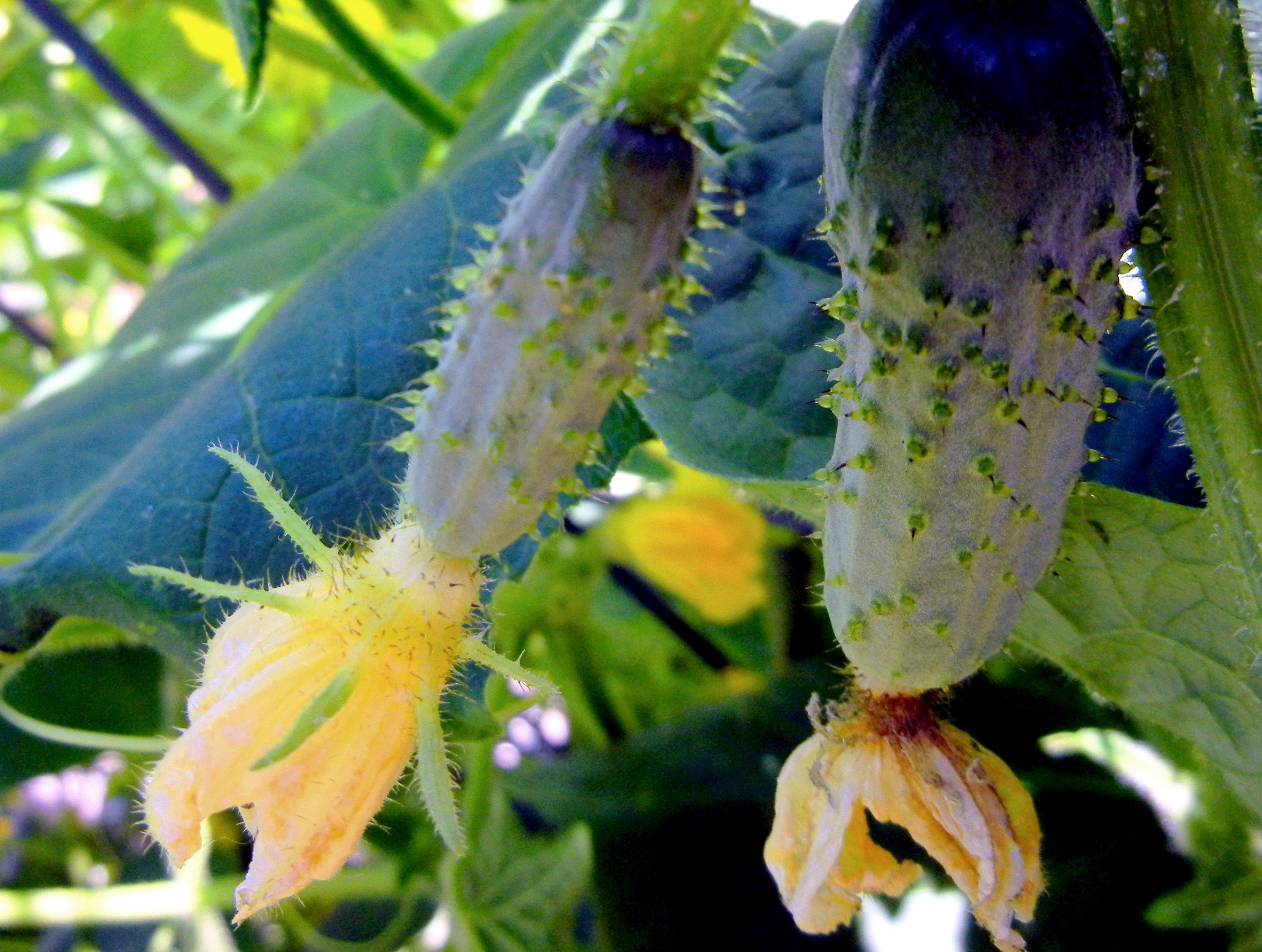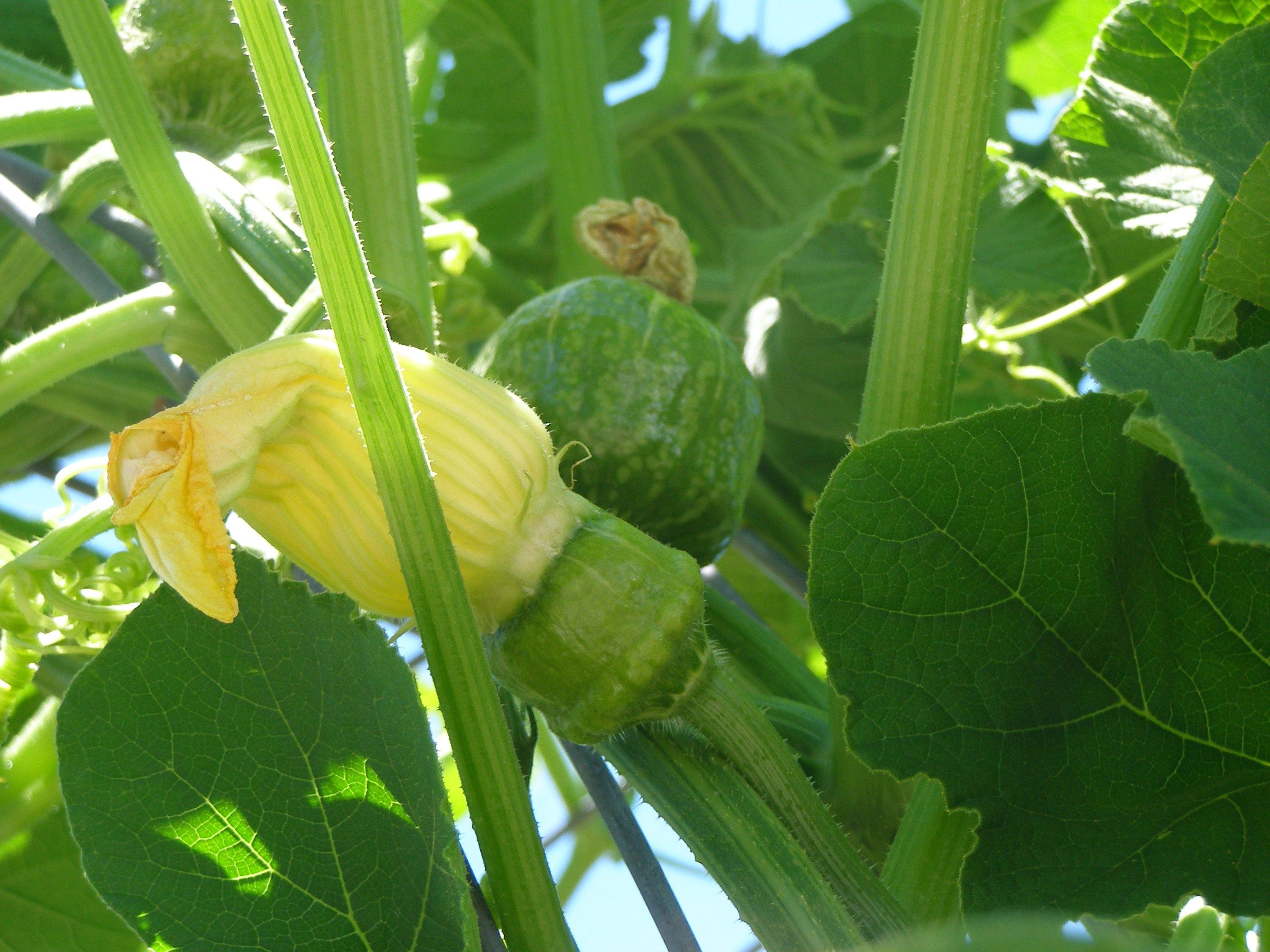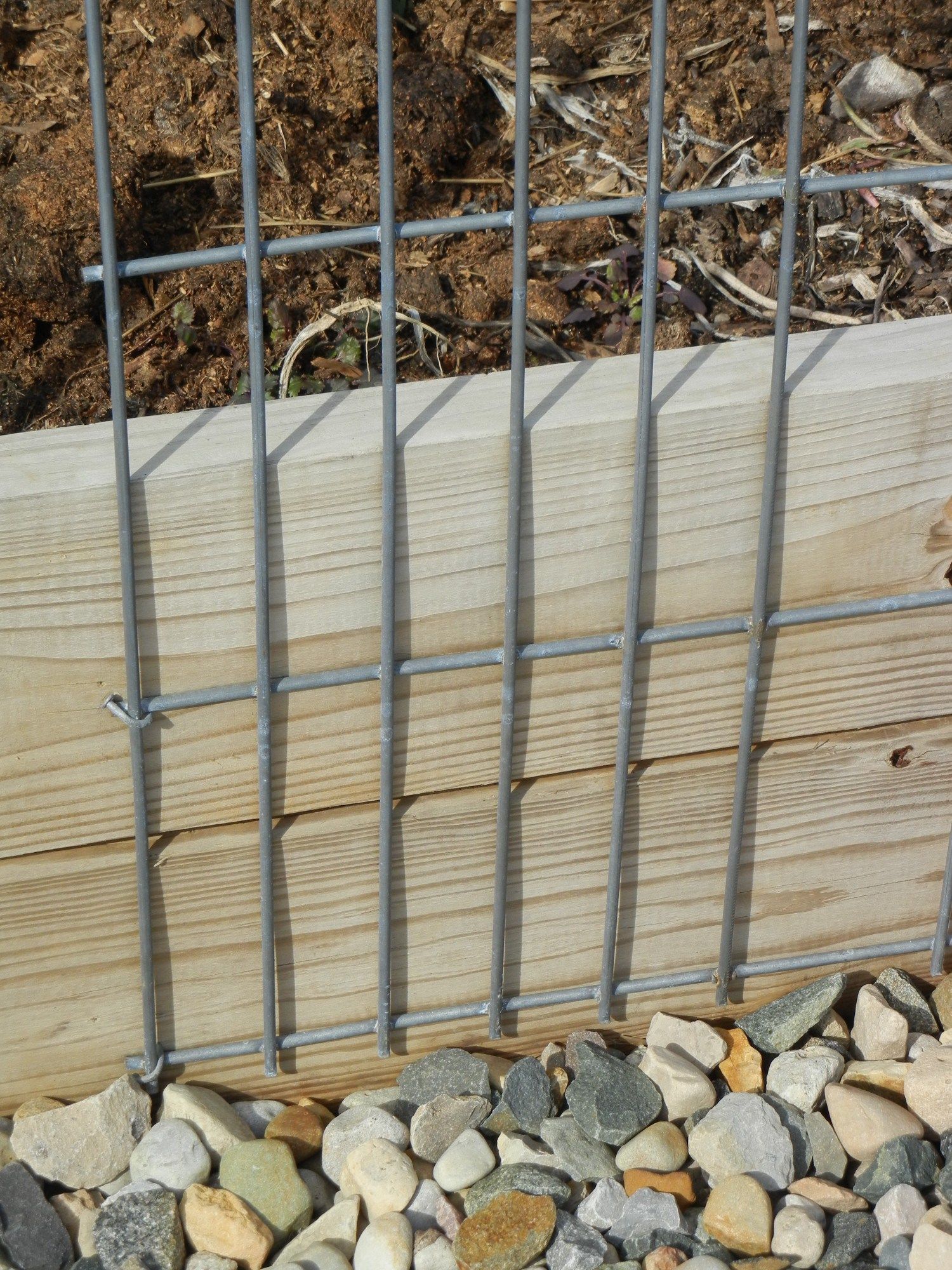Building a strong walk through trellis for squash and cukes.

2 cattle panels side by side arched over between 2 – 4? x 8? boxes
Here is how to build a simple arched trellis that will be very strong as well as beautiful. You will leave this trellis in place all year around. It holds up to high winds – we know because we have had 70-75 mph winds several times during tornado-like storms.
BUILDING A STRONG TRELLIS WITH 2 CATTLE PANELS
Check the cattle panel sizes available in your area at the local Tractor Supply, Rural King, or farm store, etc. Ask for 36-38? wide x 16? long. This gives more than enough room to walk under, yet easy to reach beans, squash, or melons when you are ready to harvest.

The ‘Straight Eight‘ cucumbers did very well last year. Stagger your planting of seeds every 2-3 weeks (if you have trellis space left) for a succession of cukes.
Planting along the bottom of a trellis is perfect for squash, pole beans, and melon plants. You will need to ‘help’ the plants up and onto the trellis for the first foot or so…just let the tendrils entwine the bottom rung or two and off they’ll go! They will flower better and bear more if given room and sunlight. Plant as many as you want, but thin leaving 6-8? between pole bean and cucumber seedlings, and 9-12? between squash or melon seedlings.
If you have the right soil for melons, these panels can be used to grow melons like cantaloupe or honeydew, but not watermelon.
The plants will naturally develop thicker stems to support the heavy fruit than if they lay on the ground. It will support all but the heavier of the squash varieties like the hubbards and pumpkins. Everything stays cleaner and leaves develop less fungus problems, although there will still be some.

Butternut can get 15-18? if you let them…

Developing buttercup squash
Harvesting is usually at waist or eye level or above, except for cucumbers which don’t grow so tall. You can sit in a chair in the shade to pick your green beans! Over many years, my favorite is disease-resistant‘Kentucky Wonder‘ pole bean (top photo).
INSTALLATION:
You will need two people to install these safely. They are quite stiff and can poke you if it springs back when you arch it. Wear heavy gloves and thick jeans. One person on either end, walk together gently folding the panel. Do not push the ends together too hard, or it will bend the metal at the top and crease it. The 4? x8? boxes will hold it in place until you can fasten it permanently.
Place the panels all the way down to the ground for stability. Use 3? galvanized or exterior nails to fasten the panel to the box. Drive the nail in deeply and bend the head over the wire in several places all along the bottom.
This can also be done without raised beds to arch between. An alternate way is to use sturdy, deep staking with 2 or 3 metal fence posts driven down 18? and secured with heavy gauge wire.

Once there are vines (especially the giant leaves of squash like butternut and acorn) crawling up and over, they can catch wind like a sail. We get very strong winds from the west and southwest here most summers, so we put our panels arched so you can walk under them from east to west – the wind blows right through. The vines may take a bit of roughing up, but wind has never affected our crop.
These panel arbors should be pretty much carefree, and they will not rust.
Now, the foundation of your garden is in place. Later this summer, take time out for yourself; get a chair and rest in the shade of one of these leafy, cool arbors. Then watch the bees and hear their ‘hum’ as they work the flowers.
Enjoy the fruit of your labor! Literally.
Source